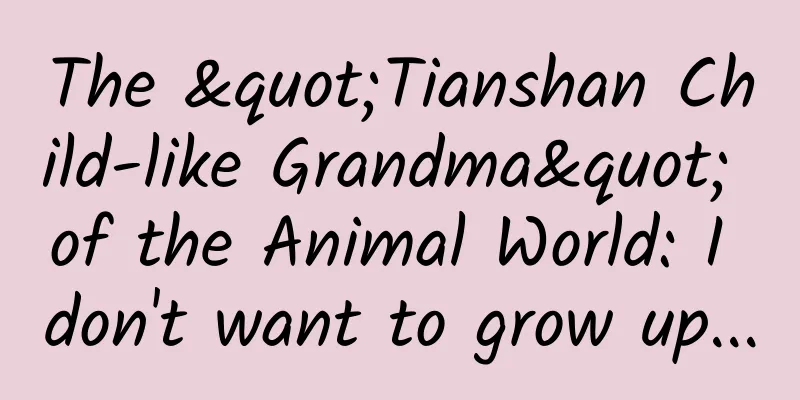Dragons used to look like pigs, and also looked like...

|
The dragon has been a symbol of the Chinese nation since ancient times. The dragon images in various forms and styles in history are the inheritance of Chinese culture. This year is the Year of the Dragon in the lunar calendar. Let us learn about the history and stories of the dragon. 1. The image of the dragon changes As a legendary beast, the dragon is full of mystery. It has a strange appearance, like a collection of various animals. However, the dragon we are familiar with now did not look like this at first. The dragon-shaped jade jue (jué) unearthed in the Redwood culture site 6,000 years ago - the "Hongshan Jade Pig Dragon" has a pig's head and no claws. Because its appearance is very different from the dragon we know today, it has caused a lot of discussion in the academic community. The painted dragon plate unearthed from the Longshan culture Taosi site, which is more than 4,000 years old, shows that the dragon has no claws. Even in the Warring States period, the dragons in the "Dragon Riding Picture" have no obvious claws, but the dragon heads are of various shapes. During the Han Dynasty, the country was unified, and the image of the dragon changed - the body became stronger and finally had claws. However, unlike now, the body of the dragon in the Han Dynasty was larger than the head, and it no longer looked like a snake. In addition, the dragon began to have wings. During the Wei, Jin, Southern and Northern Dynasties, the dragon not only had a head similar to that of a tiger, but also had patterns on its body that were very similar to those of a tiger. This image of a dragon head and a beast body has been used for a long time. The dragon relief on the railing of the Zhaozhou Bridge built in the Sui Dynasty is also the same, and the dragon's tail and body are not integrated like a snake's. Picture of Zhaozhou Bridge stone railings | Source: Baidu By the Tang Dynasty, the dragon's body had become more slender. For example, the Tang Dynasty red gold walking dragon in the Shaanxi History Museum not only looks slender, but also a bit like a cute puppy. Strictly speaking, the dragon did not have a fixed image until the Song Dynasty, when the image of the dragon was basically finalized. The dragon's body gradually tapers to its tail like a snake, and feathers begin to grow on its limbs. Its head is like a cow's, and it has dragon horns. The Song Dynasty's "Er Ya Yi" once described the dragon's appearance like this: "The dragon is the leader of scaled insects. Wang Fu said that its shape has nine similarities: head like a cow, horns like a deer, eyes like shrimps, ears like elephants, neck like a snake, belly like a snake, scales like fish, claws like a phoenix, and palms like a tiger. That's it." After continuous development, the image of the dragon has become more gorgeous and diverse. Under the modern design concept, the dragon not only retains its traditional features, but also has a more winding, colorful, and magnificent shape. 2. Descendants of the Dragon: Dragon Culture "Black hair, black eyes, yellow skin, we are the descendants of the dragon forever." Looking around the world, wherever there are Chinese people, there are traces of the dragon. So how did the "dragon culture" develop? In the ancient times when totem worship was prevalent, the dragon was only a totem of a certain tribe. But as people entered the farming era, the totem worship of the hunting era gradually declined, and the dragon was given new meanings, such as becoming a god that dominates wind and rain. At the same time, the geographical scope has also expanded, and the dragon has become the object of worship for many ethnic tribes. In feudal society, the image of the dragon was used to serve the feudal ruling class and became a symbol of politics and power. With the development of the times, the prevailing explanation in modern academia is that dragon culture comes from the integration of various ethnic groups in the early days of China. In the process of population integration, the totems of different ethnic groups converged into a cultural community, resulting in a unified "dragon" image after integration. The dragon has penetrated into every aspect of people's social and cultural life, forming a long-standing cultural connotation. The Book of Songs uses "Ten Dragon Flags" and "Dragon Flags Flying" to show the sacred and solemn scene of dragon-patterned flags fluttering in the wind during sacrificial activities. Wang Anshi wrote "Dragon Fu" to use dragons to describe people, which is unique. In ancient novels such as "Journey to the West" and "Strange Stories from a Chinese Studio", dragons also play an important role. In addition, my country's opera industry also has many dragon-related jargon terms, such as dragon suit, Jiulongkou, and Shuilongyin. Dragon culture has lasted for thousands of years and has a deep accumulation among the people. Many folk customs, folklore and national festivals are related to dragons. For example, dragon lantern dances are held during the Lantern Festival and dragon sacrifice ceremonies are held during the Dragon Boat Festival. 3. The dragon gave birth to nine sons, each with its own unique characteristics "A dragon gives birth to a dragon, a phoenix gives birth to a phoenix, and a mouse gives birth to a son who digs holes in the ground." Many people must have heard this saying. However, in ancient Chinese legends, none of the sons born by a dragon became dragons, so there is another saying: "A dragon gives birth to nine sons, but none of them become dragons. Each has its own preferences." The saying that a dragon gives birth to nine sons has been around for a long time, but what exactly they look like, what are their hobbies, specialties, and functions? It was not until the Ming Dynasty that a clear statement was made. The eldest is called "Qiuniu", and looks like a small yellow dragon with scales and horns. His greatest hobby in life is music, so his image often appears on the heads of musical instruments, such as the "dragon head huqin", the dragon head yueqin of the Yi people, and the three-stringed qin of the Bai people. Unlike the eldest who loves art, the second oldest, Ya Zi, has a dragon body and a jackal head. He is fierce, bloodthirsty and aggressive. Legend has it that at the end of the Shang Dynasty, Ya Zi appeared and used a dagger to draw a map on a stone to help King Wen of Zhou conquer the world. Later, when King Wu of Zhou succeeded in defeating King Zhou, he ordered craftsmen to carve the image of Ya Zi on swords and knives, which were passed down from generation to generation. The third one is "Chaofeng", who likes danger and hope. The animal on the corner of the temple is Chaofeng. Chaofeng symbolizes auspiciousness, beauty and majesty. It also has the function of deterring demons, eliminating disasters, and warding off evil spirits. It is also a member of the spine beasts. The fourth one, "Pulao", also called "Tu Lao", is timid and looks like a coiled dragon. Legend has it that Pulao lives by the sea and is most afraid of whales. Whenever a whale attacks, Pulao screams in fear. So people put its image on the bell, and the wood carving that strikes the bell is carved into the shape of a whale, so that it strikes the bell to make the sound louder and louder. Since almost all ancient bells have the shape of Pulao, Pulao has also become another name for the bell. The fifth one is "Suan Ni", also known as "Jin Ni" and "Ling Ni". Suan Ni looks like a lion, prefers quietness to movement, likes to sit, and likes fireworks. Therefore, its image often appears on the Buddha seat or incense burner in the temple, puffing out clouds of smoke with the incense. The sixth one, "Bixi" (bì xì), also known as "Baxia", looks like a turtle, is extremely strong, and is good at carrying heavy loads. He is a fitness expert. Legend has it that it once caused storms, but was later subdued by Dayu to help him control floods. After the success of controlling floods, Dayu was afraid that Bixi would continue to cause destruction everywhere, so he let it carry the stone tablets recording merits, so the base of ancient stone tablets is often Bixi. The seventh is called "Bi'an" (bì àn), also known as "Charter". It looks like a tiger, is very powerful, and loves litigation. In ancient times, there was usually a head of Bi'an on the gate of the prison, so the prison was also called "Tiger Head Prison". In addition, it can also be seen on both sides of the main hall of the government office and on the "Silence" and "Avoid" signs. The eighth child, Fuxi, who looks like a dragon, loves calligraphy and writing, and is very gentle. Fuxi likes inscriptions full of artistic atmosphere, often coils around stone tablets, and is willing to turn into a pattern to set off the literary treasures handed down from generation to generation. However, there are other versions about the nine sons of the dragon. For example, some versions believe that Chaofeng, Qiuniu, and Fuxi are not the nine sons, but Taotie (tāo tiè), Gongfu (gongfu), and Jiaotu (jiaotu). Other versions believe that Chi, Qilin (qí lín), Hou (hǒu), and Pixiu (pí xiū) are also among the nine sons. In fact, the "nine" in "dragon gave birth to nine sons" does not refer to the number nine in ancient China, but means "many". In short, the ancient Chinese gathered various mythical beasts, regarded them as dragon sons, and used the high-level symbol of "dragon" to highlight their status. In people's minds, they often play the role of eliminating disasters, praying for blessings, and avoiding misfortunes. Source: Chongqing Science and Technology Museum Author: Yunxiu, popular science writer. Statement: Except for original content and special notes, some pictures are from the Internet. They are not for commercial purposes and are only used as popular science materials. The copyright belongs to the original authors. If there is any infringement, please contact us to delete them. |
<<: After the Spring Festival, be careful of the "health killers" hidden in the refrigerator!
>>: Can the combination of "salt" and "mirror" generate electricity? So easy! 24 hours a day!
Recommend
Collection | 30+ data analysis and production tools essential for operations!
Today, I would like to recommend some commonly us...
Event promotion method: 4 steps to design an event to attract new customers using old customers!
Nowadays, it is becoming more and more expensive ...
APP promotion scenario: let users actively download your product!
"Scenario-based" is a prerequisite that...
It is said online that "riding a cockroach is as fast as taking the high-speed train". Is it true or false?
Kind tips The picture accompanying this article s...
Apple and Siri's seven-year itch: Siri's lonely road
Once upon a time, we thought Siri would be Apple&...
With the "woolly mammoth rat", can we really "revive the mammoth"?
On March 4, the US biotechnology company Colossal...
WeChat Moments advertising marriage industry case sharing: Panzi Nvrenfang
Plate Woman's Square The “breathing” ad space...
How to develop better writing skills?
As an operator , I have to deal with copywriters ...
A Brief Analysis of High-Performance IO Model
A Brief Analysis of High-Performance IO Model Ser...
Before going online, what operational and promotional actions should a To B product take?
Even good wine needs no bush. In this era of info...
There are three basic routines for content creation. If you understand them, you can avoid taking 10 years of detours!
There was no trap in the world, but when more peo...
Data Operations: How to define “user retention” and “activity”?
1. Active Users Let’s first define active users: ...
Learn movie editing in 7 days on Tik Tok (including a full set of video tutorials), and get a little money-making trick every day!
I don’t need to say much about the Tik Tok movie ...
The friend who is still using an old-fashioned sewing machine to make patches may be a math genius
The old-fashioned pedal sewing machine should be ...
After watching 500 Tik Tok ads, I summarized 3 types of home improvement promotions!
Advertising is the first impression that consumer...









